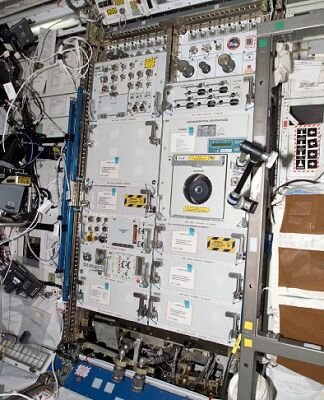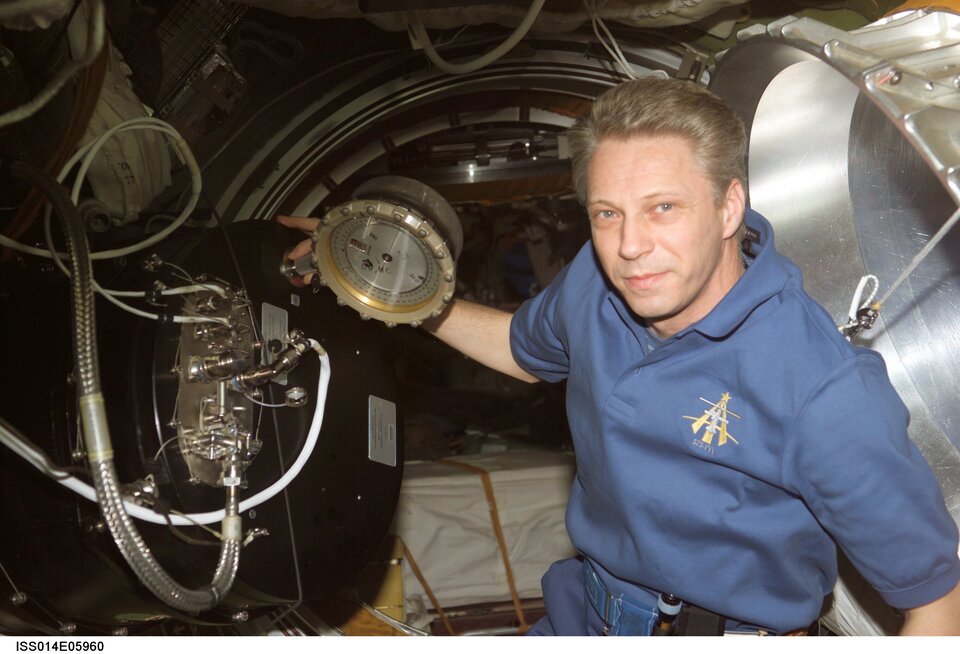Relax your heart in space
Surprisingly, space medicine indicates that a stay at the International Space Station (ISS) may have a beneficial effect on your heart and cardiovascular system. Danish scientists behind the experiments are investigating further in the hope that their findings can help to improve treatment for people suffering from heart disease.
When Swedish ESA astronaut Christer Fuglesang embarks at the beginning of December on his first journey to space he will face both physiological and mental challenges. But for his heart and cardiovascular system his stay in space will may likely be a relaxing one. This is one of the surprising results of experiments being carried out by a group of Danish scientists led by Dr Peter Norsk of Copenhagen University.
“We have found that one week in microgravity relaxes the heart and cardiovascular system. In space the heart contains 22% extra blood and the cardiovascular system is 14% less compressed than in the normal upright position on Earth. This is interesting as it suggests that a stay in space is healthy and relaxes the heart and cardiovascular system,” says Peter Norsk.
One of the most interesting questions is the long-term effects of a stay in space: will the heart and cardiovascular system benefit even more from a longer stay in space or will the effects tend to fade away?
To date the Danish scientists have carried out two experiments covering a total of nine missions to the ISS. Currently they are carrying out three experiments, one of which has just begun. This time one of the ‘guinea pigs’ is Christer Fuglesang’s colleague, German ESA astronaut Thomas Reiter, the first European member of the permanent ISS crew. In total six to eight astronauts will take part in the experiments which will last until 2010.
Data was also collected from four of the seven astronauts on the STS-107 Shuttle mission, which ended tragically in January 2003, when the Space Shuttle Columbia was destroyed on its return to Earth.
Tracer gas

The experiments make use of equipment designed to measure the amount of blood pumped by the heart every minute. This equipment, developed by Danish company Damec, is called PFS (Pulmonary Function System) and is non-invasive as no hypodermic needles need to be used.
The subject breathes through a mouthpiece to and from a sack containing 1.5 litres of air, to which a tiny amount of tracer gas is added. During respiration the tracer gas is gradually transferred to the blood and a measuring device detects the speed at which the tracer gas is absorbed. From this it is possible to calculate how much blood passes through the lungs and this equals the amount of blood pumped by the heart.
In addition, the astronaut’s blood pressure is measured for 24 hours – once on the ISS and once on Earth and during each 24-hour period a blood sample is taken. This is then used to establish the concentration of hormones and the activity of nerves.
“The main focus of the experiments is to understand how microgravity affects the regulation of blood pressure. Another focus is to establish how some of the hormones responsible for regulating the cardiovascular system are affected by long-term microgravity. We found earlier that the production of hormones – in contrast to the heart and cardiovascular system – is activated by microgravity. This is why we want to measure heart, cardiovascular system, nerve activity and hormones simultaneously during a long-term stay in space,” Norsk explains.
Gravity stresses the cardiovascular system

The results will obviously be of interest for future long-term missions in space, such as a visit to Mars, but they also interest doctors studying heart disease here on Earth.
“We would expect the heart to pump more blood in microgravity than on Earth and blood pressure to be lower. Also we would expect the nervous system and the production of hormones to be relaxed. Should this not be the case, however, it will suggest that nerve signals affect the cardiovascular system in a different way in space,” says Peter Norsk.
“If it appears that microgravity relaxes the cardiovascular system not only over the short term but also over a longer period of say several months this would mean that the stress of gravity on a daily basis stimulates and stresses our cardiovascular system. Stress is a problem for patients with heart problems as it tends to aggravate the disease. Without the experiments we are carrying out in space we would not be able to tell how heavily the daily stress of gravity affects the system. By gaining this insight we may be able to find ways of countering the stress”.
Alongside the space experiments the Danish scientists are also carrying out research on patients with heart disease. Peter Norsk explains: “Here we aim to counter the daily effect of gravity by bringing the patient’s balance of water and salinity to a level which gives the volume of liquid and blood that best counters gravity stress and produces the optimal workload for the heart. This entails measuring the blood being pumped by the heart during 24 hours. Now, with the equipment developed for use in space, this has been made possible”.


